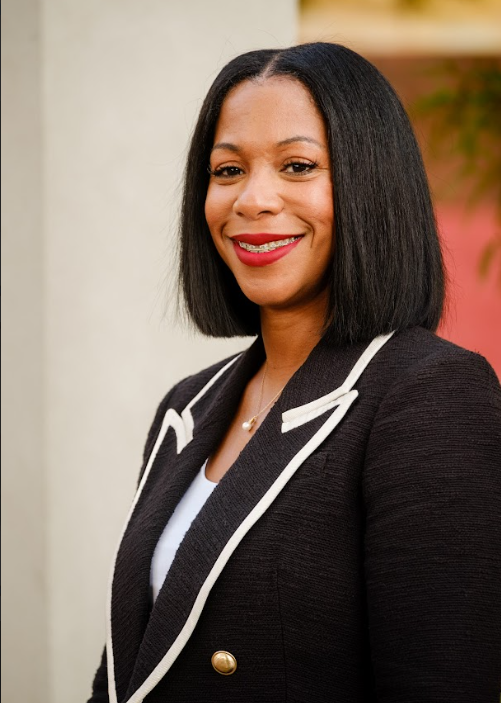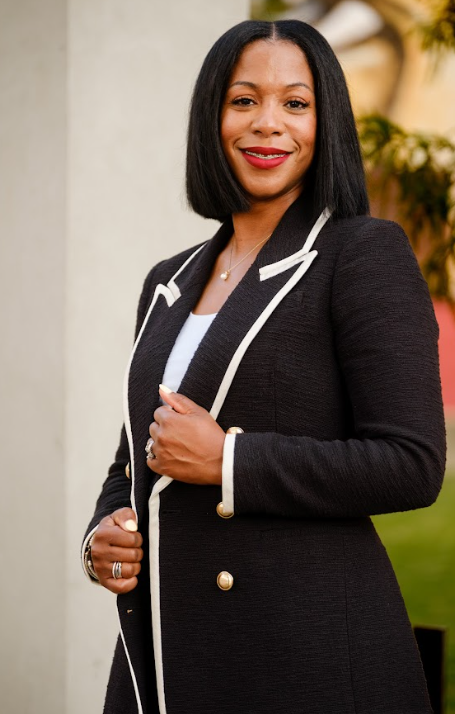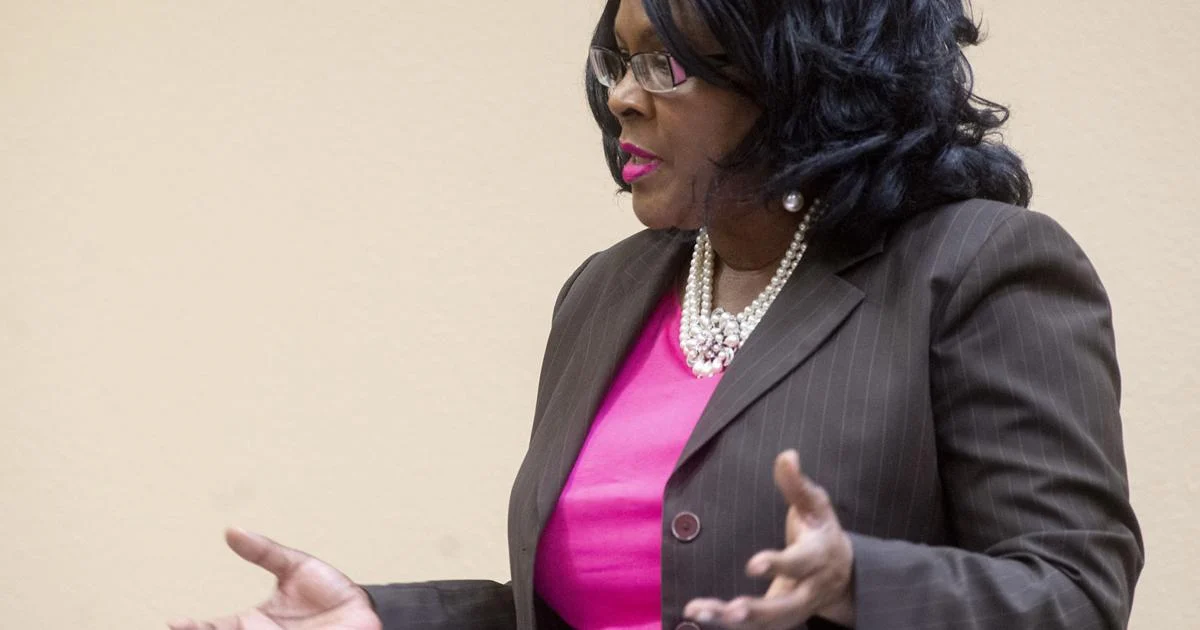
LEADING WITH PURPOSE: A CONVERSATION WITH MELANIE HAMILTON, TCIS CHIEF OF SCHOOLS, LONGVIEW ISD
LEADING WITH PURPOSE: A CONVERSATION WITH MELANIE HAMILTON, TCIS CHIEF OF SCHOOLS, LONGVIEW ISD
By Joycelyne Fadojutimi/www.infinitieplusmag.com
Photos by Michael Cavazos
LEADING WITH PURPOSE: A CONVERSATION WITH MELANIE HAMILTION, TCIS
CHIEF OF SCHOOLS, LONGVIEW ISD

Melanie Hamilton has a diversified educational portfolio with a:
- Bachelor of Science degree in accounting from Grambling State University. Grambling, Louisiana
- A Teacher Certification from LeTourneau University, Longview, Texas
- A master’s degree in educational leadership from the University of Texas Permian Basin in Odessa, Texas
- Superintendent Certification from Texas A&M in Texarkana, Texas
And she has 17 years of experience in education.

What inspired you to pursue a career in education and ultimately become a Chief of Schools?
My journey into education began with a desire to make a meaningful difference in students’ lives. What started as a profession quickly became my purpose: to ignite a love for learning and drive a culture of excellence. Over time, I realized that my impact could stretch far beyond the walls of a single classroom. By supporting school leaders and teachers, I could help create thriving environments for students across entire campuses and districts. Serving as a Chief of Schools allows me to do just that—shape systems, support educators, and ensure every child has access to a high-quality education.
Can you walk us through your professional journey?
I began as a classroom teacher, where I developed a deep foundation in curriculum and instruction. I later served as a district elementary math specialist, and then as a campus principal, roles that allowed me to lead instructional transformation firsthand. I transitioned to Region 7 as a Coordinator in the Center for Effective Schools, where I partnered with school leaders to build strategic visions, implement data-informed practices, and drive systemic change. Each role has reinforced my belief in the power of
leadership, alignment, and a relentless commitment to high expectations. Now, as a Chief of Schools, I oversee multiple campuses with a focus on sustainable improvement and equity for all learners.
LEADERSHIP PHILOSOPHY

How would you describe your leadership style?
My leadership style is collaborative, strategic, and results-driven. I place a high value on relationships, transparency, and consistency—while maintaining a sharp focus on accountability and student outcomes. I believe in empowering principals and teachers to lead; while ensuring they have the tools and support necessary to achieve success.
What values guide your decision-making? My core values are equity, excellence, and integrity. Every decision I make is rooted in what’s best for students. I prioritize access to high-quality instruction, long-term sustainability, and data-informed planning without ever losing sight of the people behind the numbers.
Strategic Leadership and Vision
Which district-wide initiatives contributed most to your recent STAAR success? Several key strategies played a role including:
- Implementing tiered intervention systems to meet students where they are.
- Strengthening Professional Learning Community, PLCs to foster collaboration and data-driven instruction.
- Using common assessments and accountability checkpoints to track progress consistently across campuses.
How did you ensure alignment between district goals and campus execution? We created clear structures for communication, coaching, and feedback. Regular leadership meetings, campus walkthroughs, and data reviews ensured that principals not only understood the district’s goals but also had the guidance to bring those goals to life at the campus level.
How did you prioritize support across schools with varying needs? We took a data-informed, context-sensitive approach. Campuses with the greatest academic gaps received intensive coaching, additional resources, and more frequent monitoring. Higher-performing schools were recognized and received strategic support to sustain their momentum and avoid complacency.
DRIVING RESULTS THROUGH DATA

Which data indicators were most critical in predicting STAAR outcomes?
We focused closely on benchmark data, formative assessments, growth metrics, and student attendance. Growth data, in particular, served as an early indicator of whether instructional strategies were having the desired impact.
How did you support principals in using data to inform instruction?
We established regular data meetings with principals, instructional coaches, and teachers. These sessions were collaborative, focused on identifying learning gaps and generating actionable next steps to improve instruction in real time.
What role did district assessments play in your success strategy?
District-wide benchmarks provided a unified view of progress across campuses. They helped us identify trends, measure mastery, and adjust instruction before the STAAR window opened.
CAMPUS SUPPORT AND DIFFERENTIATION
How did you differentiate support based on campus performance?
We used a tiered support model. For example, struggling campuses received frequent coaching visits, intensive interventions, and additional instructional staff. On the other hand, more successful campuses received targeted support designed to maintain high performance while encouraging innovation.
What types of interventions did you implement for schools with the greatest needs?
We offered after-school tutoring, Saturday academies, embedded instructional coaching in math and literacy, and targeted professional development for teachers.
Were there specific high-leverage strategies that led to quick improvement?
Yes. Two strategies stood out:
- Instructional coaching cycles with clear feedback and follow-through.
- Non-negotiable data practices, including routine data reviews and action
planning to close learning gaps promptly.
INVESTING IN LEADERS AND TEACHERS
How did you build leadership capacity among principals?
We treated principals as our lead instructional drivers. Through leadership academies, individualized coaching, and collaborative sessions, we equipped them with the tools to lead instruction and meet STAAR expectations head-on.
What professional development models were most impactful?
We leaned on proven frameworks like Paul Bambrick-Santoyo’s Leverage Leadership and Get Better Faster to guide our coaching. These models helped standardize our approach to development while allowing for campus-level customization.
How did you ensure instructional quality remained consistent across campuses? We implemented district-wide instructional frameworks and aligned professional learning accordingly. Regular walkthroughs helped us calibrate expectations and maintain a shared standard of excellence.
BUILDING SUSTAINABLE SYSTEMS
What systems helped monitor progress toward academic goals?
Our key systems included:
- Learning walks
- Instructional coaching cycles
- Campus and district data reviews
These routines allowed us to track progress in real time and pivot as needed.
How did you balance accountability with empowerment for school leaders?
We set clear goals and monitored progress while fostering a culture of trust and collaboration. Regular coaching conversations helped leaders reflect, solve problems, and take ownership of their outcomes.
How did you maintain momentum without causing burnout?
We paired high expectations with high levels of support. Moreover, leaders and teachers were given coaching, resources, and encouragement, ensuring they felt equipped, not overwhelmed.
LOOKING AHEAD: REFLECTION AND FUTURE GOALS
Which practices from your STAAR success are you planning to scale moving forward?
We will continue using the tiered support model, reinforce consistent use of formative assessments, and scale leadership development practices that proved most effective.
What systemic challenges did you face, and how did you overcome them?
One major challenge was creating consistency across campuses with varying capacities. We overcame this by standardizing expectations and strengthening monitoring, while still tailoring support to each school’s needs.
What’s your plan to sustain and grow academic momentum?
We’ll deepen instructional coaching, refine our data systems, and invest in meaningful professional learning. We’re also focusing on student engagement and positive campus culture because academic success is tied to how students and staff feel.
How did campus culture and student engagement influence outcomes?
They were foundational. When students feel supported, recognized, and challenged,
they rise to the occasion. Our focus on campus culture, high expectations, and student
voice played a critical role in our success.
If you had to name one core principle that drove this year’s results, what would it be?
A steadfast belief in the potential of every student supported by strong systems, strategic leadership, and an unwavering commitment to equity and excellence.
Chief Hamilton’s journey reflects the power of intentional leadership grounded in purpose, strategy, and compassion. Her work is a blueprint for educational leaders aiming to drive transformation across schools and systems—one student, one leader, and one campus at a time.

ABOUT TCIS: Texas Council of International Studies. TCIS a 501(c)(3) nonprofit, was established to support the general improvement of education for Texas IB students and schools. TCIS facilitates implementation of IB programs through partnership agreements with IB schools and districts. The primary connection between TCIS and Longview ISD is through personnel, such as Melanie Hamilton, who serves as chief of
schools for Longview ISD under the TCIS umbrella, and through collaboration on educational initiatives and programs.
Chief Hamilton oversees: Longview High School, Hudson Pep Elementary, Foster Middle, Judson STEAM Academy, Clarence W. Bailey Elementary, and Ned E. Williams Magnet STEAM Elementary.
Thank you for reading. Feel free to leave an online comment and follow us on Facebook. #SupportingLocal #infinitieplusmag




